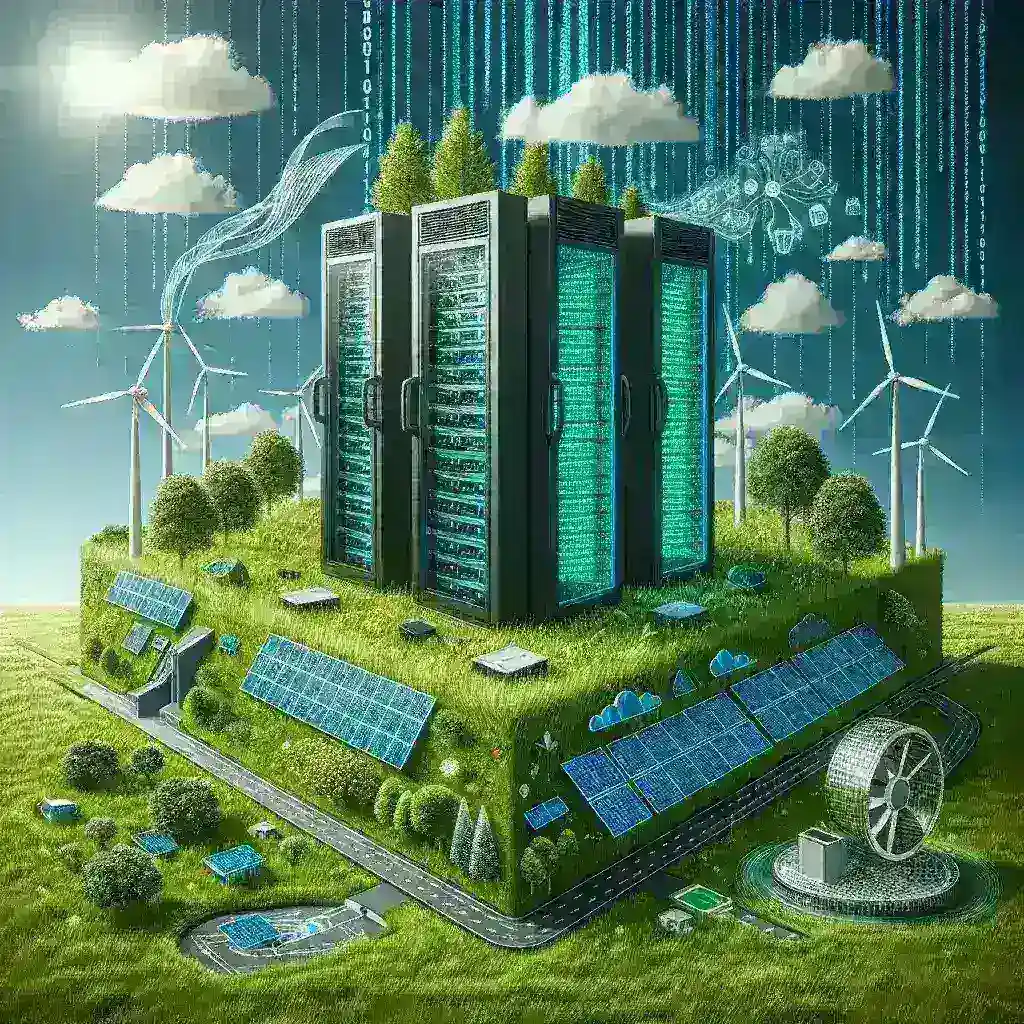Introduction
In the age of digitalization, the demand for data processing and storage continues to rise exponentially. As a result, data centers have become the backbone of the internet, supporting businesses and consumers alike. However, the environmental impact of traditional data centers is significant, leading to increased energy consumption and carbon emissions. This has prompted the emergence of green data center principles, which aim to make data management more sustainable. In this article, we will explore what these principles aim to achieve and their importance in today’s tech-driven world.
Understanding Green Data Centers
Green data centers are facilities that focus on reducing their environmental footprint while maintaining efficiency and productivity. By implementing sustainable practices, these centers aim to minimize energy consumption, reduce waste, and improve resource utilization. The principles guiding green data centers include:
- Energy Efficiency: Optimizing energy use to reduce consumption and reliance on non-renewable resources.
- Renewable Energy: Utilizing sustainable energy sources such as solar, wind, and hydroelectric power.
- Cooling Efficiency: Implementing advanced cooling technologies to manage heat more effectively.
- Waste Reduction: Minimizing electronic waste and promoting recycling initiatives.
- Resource Optimization: Enhancing infrastructure to maximize performance while using fewer resources.
The Goals of Green Data Center Principles
Green data center principles aim to achieve a variety of goals that align with environmental, economic, and social responsibility. Below are some of the key objectives:
1. Reducing Carbon Footprint
One of the primary goals of green data center principles is to drastically reduce carbon emissions. This is achieved by optimizing energy usage, utilizing renewable energy sources, and employing energy-efficient technologies. For instance, data centers that switch to solar or wind energy can significantly cut down their reliance on fossil fuels, leading to a cleaner environment.
2. Enhancing Energy Efficiency
Energy efficiency is a core tenet of green data centers. By adopting advanced technologies such as virtualization, intelligent power management, and energy-efficient hardware, these centers can greatly reduce their energy consumption. According to the U.S. Department of Energy, implementing energy-efficient practices can reduce operational costs by up to 30%.
3. Promoting Sustainable Practices
Green data centers strive to promote sustainable practices not only within their operations but also throughout their supply chains. This includes selecting vendors and partners who prioritize sustainability, thereby creating a ripple effect that encourages eco-friendly practices across the industry. Collaborations with organizations focused on sustainability can amplify these efforts.
4. Reducing Water Usage
Data centers consume a considerable amount of water for cooling operations. Green principles advocate for the use of water-efficient cooling systems, such as evaporative cooling and closed-loop systems, to minimize water waste. Implementing these systems can significantly reduce water usage, contributing to water conservation efforts.
5. Utilizing Innovative Technologies
The integration of cutting-edge technologies is essential for enhancing the operation of green data centers. From AI-driven energy management systems to advanced cooling technologies, innovation plays a crucial role in achieving sustainability goals. For example, machine learning algorithms can predict energy usage patterns, enabling data centers to optimize their consumption and reduce waste.
6. Creating a Circular Economy
Green data centers emphasize the importance of establishing a circular economy, wherein resources are reused, remanufactured, and recycled. This approach minimizes electronic waste and promotes sustainability. By implementing take-back programs, data centers can ensure the responsible disposal and recycling of outdated hardware.
Challenges Faced by Green Data Centers
While there are many benefits to adopting green data center principles, challenges remain. Some of these challenges include:
- Initial Investment: The upfront cost of integrating sustainable technologies can be significant, deterring some organizations from making the switch.
- Technological Limitations: Not all data centers have access to the latest technologies that support green initiatives.
- Regulatory Compliance: Navigating the regulatory landscape regarding sustainability can be complex and time-consuming.
The Future of Green Data Centers
The future of green data centers is poised for dramatic change as technology continues to evolve. Predictions suggest that by 2030, a significant portion of data centers will incorporate renewable energy sources, automated energy management systems, and sustainable infrastructure. This transition will not only benefit the environment but also result in cost savings for organizations.
Conclusion
Green data center principles aim to create a more sustainable, efficient, and responsible approach to data management. By focusing on reducing carbon footprints, enhancing energy efficiency, and promoting innovative technologies, these centers are paving the way for a greener future. As the demand for data continues to grow, adopting these principles will be essential for achieving long-term sustainability in the tech industry. Businesses and consumers alike can benefit from the advancements made in this sector, leading to a healthier planet for generations to come.

